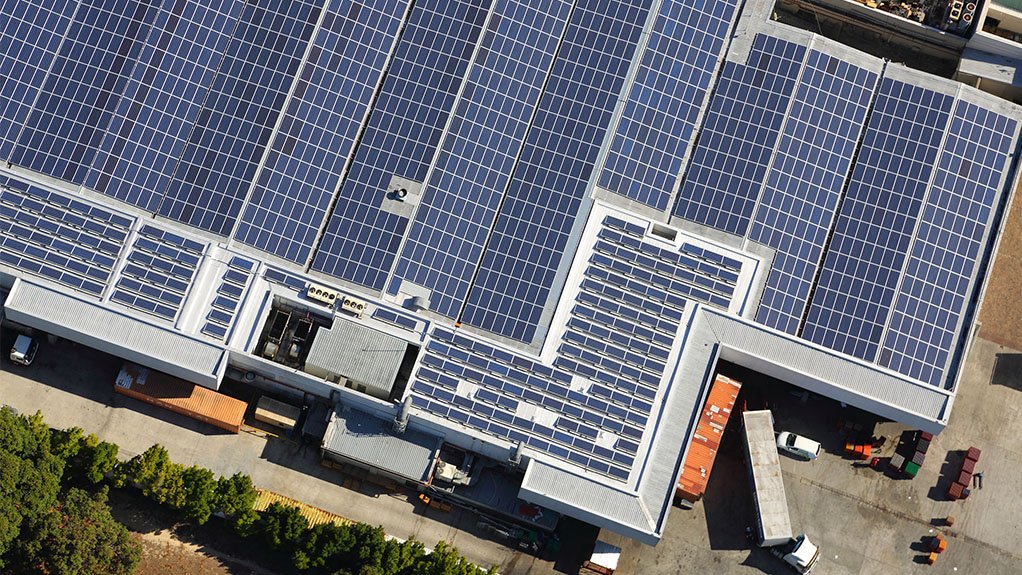The Electricity Regulation Amendment Bill is expected to realise significant local embedded generation capacity growth by removing the cap on the licensing threshold, but the current version of South Africa’s Integrated Resource Plan (IRP) is a limiting factor.
The amendment of Schedule 2 of the Electricity Regulation Act (ERA), No 4 of 2006, that lifted the licensing threshold from 1 MW to 100 MW had an enormous impact on the local electricity supply industry when it came into effect in August last year, says law firm Webber Wentzel partner Jason van der Poel.
“This change opened the floodgates of South African mining, industrial, telecommunications and other companies procuring private power to decarbonise and safeguard against the uncertainty surrounding State-owned power utility Eskom’s electricity supply and its rising tariffs.”
However, with the potential flood of activity expected on the back of the implementation of an “unrestricted” licensing threshold comes the restriction of the outdated IRP 2019, which limits local embedded generation procurement to 500 MW/y from 2023 to 2030.
The Bill provides for the IRP to be revised every three years, but it will take time to update and amend, says Van der Poel.
Consequently, he recommends that Mineral Resources and Energy Minister Gwede Mantashe issue a Ministerial deviation from the IRP to allow for procurement of embedded generation above the 500 MW/y provided for.
Another drawback is the Bill’s continued provision for a high level of control by the Minister, and the National Energy Regulator of South Africa (Nersa).
In some instances, this negates the Bill’s objective of opening the electricity supply industry in South Africa, says Van der Poel.
Embedded generation project developers should be aware that Section 14(d) of the ERA empowers Nersa to set or approve tariffs charged by licensees, but the Bill has removed Nersa’s obligation in Section 14(e) to include the methodology used to determine rates and tariffs in the licence conditions.
“This means that independent power producers (IPPs) won’t be able to see how tariffs and rates are calculated, which could potentially open the door to possible abuse of power and goes against the principle of transparency.”
Nersa is also the gatekeeper of the cost of wheeling, with Section 15 of the ERA stipulating the tariff principles to be applied by the regulator when setting or approving prices to be charged by Eskom or municipalities for wheeling through the country’s transmission and distribution grids.
Further, Section 14(y) of the Bill empowers Nersa to impose penalties on facilities developed to generate power for private consumption or for trading to customers under direct supply agreements if they do not become operational on or before their designated scheduled commercial operation date.
Van der Poel argues that the imposition of such penalties on private generation facilities, but not on other facilities, such as facilities belonging to IPPs selling electricity to Eskom, appears to be arbitrary and the justification for this amendment is not immediately clear.
“This is a matter that should be governed contractually between buyers and sellers, and not by Nersa.”
He stresses that the Bill cannot regulate the substantial time it takes to permit electricity generation projects and negotiate private power purchase agreements between buyers and sellers.
“However, complementary legislation is being passed to help speed up the permitting process for such projects to help the Billbetter facilitate private power development and offtake,” highlights Van der Poel.
The Bill further promotes an open electricity market in South Africa and breaks Eskom's monopoly through the proposed establishment of a transmission system operator (the TSO) to allow for a nondiscriminatory, competitive electricity trading platform that operates through a central purchasing agency.
The capacity of South Africa's transmission grid is heavily constrained across the country. The TSO will also be responsible for transmission planning, although the current grid constraints will take time and funding to resolve, notes Van der Poel.
Time to Impact
Ultimately, there has been a sense of urgency to approve the amendments to the ERA, as the country continues to battle the impacts of loadshedding, says Van der Poel.
The National Economic Development and Labour Council committee that is negotiating the Electricity Regulation Amendment Bill originally set a six-month timeline for the completion of its process before submitting the Bill to Parliament for approval.
“The process has been slightly more protracted than expected, but the Department of Mineral Resources and Energy team driving the amendment process has been proactive and thorough,” he emphasises.
While the intent is for Parliament to pass the Bill into law before the end of the year, there is a five-year transition period following the enactment of the amended ERA to allow for key aspects of the Act, such as the establishment of the TSO, to be implemented.
Edited by: Zandile Mavuso
Creamer Media Senior Deputy Editor: Features
EMAIL THIS ARTICLE SAVE THIS ARTICLE
ARTICLE ENQUIRY
To subscribe email subscriptions@creamermedia.co.za or click here
To advertise email advertising@creamermedia.co.za or click here















